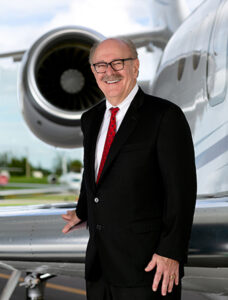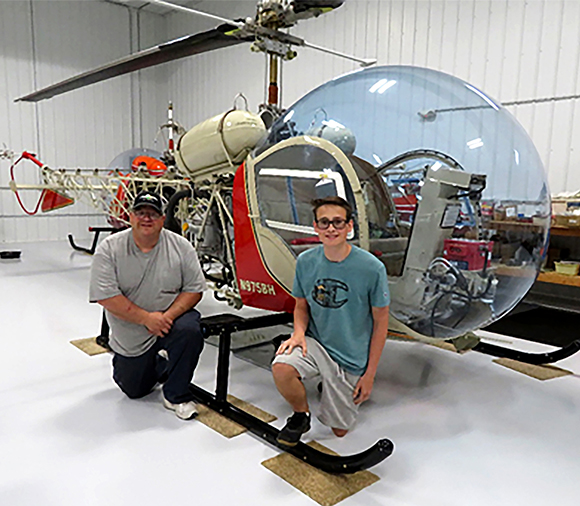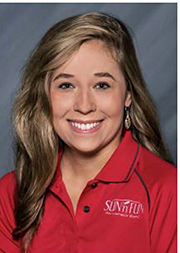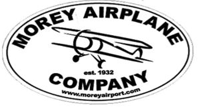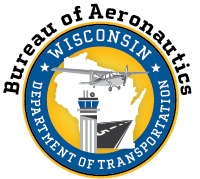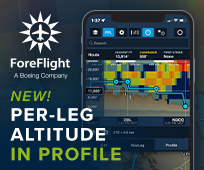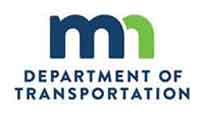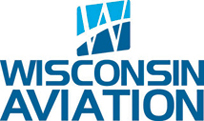
by Dean Zakos
© Dean Zakos 2022. All Rights Reserved
Published in Midwest Flyer Magazine August/September 2022 Digital Issue
In my years of flying, I never thought much about ghosts or the supernatural. Something in August 1980 assuredly changed my mind.
I grew up in a small, rural community. There were 13 in my high school graduating class. I wanted to see more of the world. I attended a community college in Atlanta. While in school, I was employed part time with Eastern Airlines. That job was my introduction to aviation and, indirectly, my path to becoming a pilot. While working at the airline, I came to know its operations, the aircraft I routinely would see and service on the ramp, and how to do weight and balance calculations for transport category aircraft.
One day, my supervisor discovered that I had never flown in an airplane. He arranged for a first-class ticket for me on an afternoon flight, round trip from Atlanta to Miami, on a Boeing 727-200, the “Whisper Jet.” The only stipulation was, I had to be back for the start of my shift later that same day. Once off the ground, I could hardly believe what I was seeing outside my window seat. The flight, first in and out of clouds during the climb, then cruising high above a solid layer, opened up a whole new world to me. I still remember my reaction to the experience. I thought to myself, “If I am having this much fun flying as a passenger, it must really be fun to be a pilot.”
With that flight, my focus and goals changed from school to flight lessons. I located a small Part 141 school at Tamiami Airport (KTMB) in Florida, and soon found myself behind the controls of Cessna 150s and 172s. Aircraft rates were $8 – $10 per hour. My primary instructor was a good teacher, and she was a former national aerobatic champion. After I obtained my ratings, I went back to Atlanta to work for a charter company, flying cargo and passengers in twin Cessnas. I also joined a U.S. Army reserve unit. I indicated my preference was to fly. I had almost 2,000 hours by then. The Army, recognizing what they had, allowed me to advance a few levels in their flight training, and put me in fixed-wing aircraft – the C12 Huron (Beech King Air), the U6A (de Havilland Beaver), and the L19/01 (Cessna Bird Dog).
After leaving the Army, I tried several flying jobs in the hope of finding the one that best fit me. For a period of time, I flew for Eastern Airlines, then I went north to Alaska and flew the Consolidated PB4Y-2 “Privateer” (B-24 Liberator with a single, straight tail) and the Fairchild C-119 “Flying Boxcar,” firebombing in remote regions of the state. Five seasons later, I flew a Rockwell Turbo Commander for a Virginia-based charter company, traveling the continental U.S., and into Central and South America, all single pilot. I had amassed almost 6,000 hours at this point.
In August 1980, I was in Florida at Miami-Opa Locka Executive (KOPF). It was, as it was on most days in South Florida, hot and humid with scattered clouds. The ramp outside the FBO shimmered in the afternoon heat. Sitting in the air-conditioned FBO waiting for my passengers to arrive, I listened to “Sailing” by Christopher Cross on the FBO’s speakers as I flipped through a few flying magazines. My charter flight that day, in a Cessna 414A Chancellor, was Opa Locka direct Virginia Beach (42VA). Scheduled to depart at 2:30 pm, five passengers were onboard. The weather did not appear to be a concern. Forecast was for some possible scattered thunderstorms along the Florida and Carolina coasts. The flight looked to be routine, but it was not routine. I have never had another flight like it – before or since.
The 414A is a light, pressurized, twin-engine transport aircraft. It is powered by two wing-mounted 310 hp (231 kW) Continental TSIO-520-J horizontally opposed, six-cylinder, turbocharged engines, and can carry up to eight passengers. Its length is a little over 36 feet and its wingspan is 44 feet. Gross takeoff weight is 6,750 lbs. Maximum speed is 275 mph. Service ceiling is 30,800 feet.
Most of my flights in the 414A were flown in the high teens or low-to-mid-twenties. The 414A had great visibility for the pilot and passengers, with two large windshields up front, and 10 oval windows for those seated in back. For hauling passengers, I liked the large, open cabin, and the ample baggage/cargo areas. The passengers always enjoyed the aircraft. The 414A enjoyed a good safety record, one of the best for light twins, and was easy to fly if you were a capable and confident pilot.
The departure and climb out were uneventful; however, the scenery spreading out below us was as spectacular as always in South Florida, with a bright blue sky and the stunning aqua greens and blues of the Atlantic, with sailboat, charter, and cruise ship traffic dotting the light waves, driven by mild breezes. Four of the passengers sat in the club seats in the back of the 414A, animatedly playing cards and talking among themselves. The fifth passenger sat up front with me in the right seat.
I filed for Flight Level 250 for my cruise altitude. After being vectored east out over the ocean, Miami Center turned us north. Our track would take us out about 140 miles from the shoreline. Although I gave it no thought at the time, the route would take us into the Bermuda Triangle, also known as the “Devil’s Triangle.”
For decades, the fabled Bermuda Triangle has captured the imagination, or raised the concern, of sailors, pilots, and the public with unexplained disappearances of ships, planes, and people. The Triangle is bounded roughly by Miami, Florida, San Juan, Puerto Rico, and Bermuda. The flight this afternoon would proceed through the far western corner of the Triangle.
The autopilot was engaged. We were level at 25,000 feet. After a handoff to Jacksonville Center (JAX), I was already thinking about my plans after we landed in Virginia Beach. I was alert, but relaxed, chatting amiably with the passenger in the right seat. Suddenly, without warning, the aircraft’s nose pitched up about 10 degrees. Not expecting any sudden deviation from straight and level flight, the action instantly captured my full attention.
My immediate thought, “What is going on here?” A quick glance confirmed that the autopilot was still engaged. A moment later, the nose pitched down sharply. Rate of descent quickly passed a thousand feet a minute and we descended below our assigned altitude by almost 2,000 feet. I disengaged the autopilot and called JAX Center: “JAX Center, Chancellor One Tango Alpha, we are in descent.”
My second thought, identical to my first, but more emphatically, “What in the hell is going on here?” I wanted to remain calm, as I did not want to overly alarm my right seat passenger. A quick scan showed all engine instruments were normal. The aircraft was trimmed for level flight. Pulling on the yoke returned the aircraft to straight and level. I did not think it was a control problem. I considered a left turn toward the coastline. A few seconds later, an imposing, solid-appearing wall of thick clouds, suddenly appeared in front of us. The clouds towered over us and descended vertically well below our current altitude. Where did these clouds come from? I could swear that they were not there just a moment ago.
We proceeded into the clouds. Are we on the edge of the thunderstorms that were forecast? How could these clouds have developed so quickly? The clouds were neither dark nor foreboding. A bright, milky white, they were as thick as any I have ever flown through. In the strange, opaque mist, I had trouble making out the engine nacelles, prop spinners, and wing tips just a few feet from my side windows. I leave the autopilot off. I am hand-flying. I need to sort out what I am seeing and what is going on. Thankfully, the ride was as smooth as can be. No turbulence. As smooth as any air I have flown in. No ice in these clouds, even though the outside air temperature was below the freezing level.
Red “inop” flags start popping up on the instrument panel. The HSI and flight director go off-line. The lateral deviation bar on the HSI has lost the TO radial I was tracking and is pegged to the side of the instrument. The whiskey compass appears to be slowly turning aimlessly. I attempt to contact JAX Center. “JAX Center, Chancellor One Tango Alpha.” I repeat the call. No response from JAX Center. No radio chatter. I check the frequency on my comm one. Yes, it is correct. I tune the second comm radio and repeat the call. Still no response. I check the audio panel and volume controls. Then, I examine the electrical system. Amps and breakers are good. I try one last time, even trying the guard frequency. I have lost radio contact with JAX Center, and with the rest of the world. I can’t explain it. I reach over and change my transponder squawk code from the assigned four digits to 7600.
There are times, even after logging thousands of hours, that I am still grateful to my primary instructor for the lessons she instilled in me. “Despite everything that is happening around you, fly the airplane,” she told me firmly and repeatedly in the cramped, sweltering cockpit of the C150. “Even if the airplane quits on you, you don’t quit on the airplane.” I am heeding her words now.
I transmit in the blind, “Any station, be advised Chancellor One Tango Alpha, level at two-five zero, has lost comm with JAX Center.”
Then, something starts to come over me or, more accurately, creep up on me. The little hairs on the back of my neck are standing up. My body is tingling. It isn’t fear, or the kind of stress that builds in you as you realize that an engine has quit, or the gear won’t operate after you have moved the gear lever to the down position. It is a different feeling. Something strange is going on here – but I have no idea what. It is almost as if there is an electrical current in the air. It was not there; and then, as we entered the freakish clouds, it was. It is palpable; I can sense it, I can feel it running through me, but I cannot identify it. My right seat passenger has noticed it too. He has gone quiet; stopped fidgeting in his seat. I say to him, “I have never seen this before,” but I assured him that, although there is something going on with the instruments, “We are in no immediate danger.” If only I knew that to be true.
I wasn’t as concerned for myself as I was for my passengers. As PIC, it was my duty to see to the safety and comfort of my passengers. It is disconcerting to not be confident in identifying what the nature of a problem is, and to not be in a position to determine the correct response. I felt compelled to do something to address what we were facing but, under the circumstances, I did not know what to try.
For some reason, I remembered the old jokes about pilots’ last words, “Hey, why is that happening?” or simply “Oh, s#&t!” I am not so amused now by these macabre punchlines in my present, humorless predicament.
The compass is useless. Our last course was approximately 360 degrees. To the west was the coastline. Although the clouds seem as thick as middle fair cotton, there was a lighter spot off the left wing. I surmised that the source of the light was the sun, which should be on our left. I decided I would make a slow turn to the left, toward the light. I held standard rate in the turn for about 30 seconds. We flew on in the dense, murky white for several more minutes. From where I was sitting – an eternity.
Then, we exited the strange clouds as quickly as we flew into them. It was as if we were flying in one world, a solid white, silent, threatening, difficult to understand world, and then flew back into the other – the world we came from, which was familiar, predictable, and comfortable. The peculiar electricity which I so acutely felt in me and around me had dissipated.
The instruments in the panel all came back on-line, the inop flags disappearing back into the bezels. I could clearly hear chatter on the JAX Center frequency. My comm and nav radios were back in business. “JAX Center, Chancellor One Tango Alpha, I had trouble with my radios. How do you read me?” “Loud and clear,” came the response. “Glad to know you are back with us.”
Although everything now appeared to be operating normally again, I determined it was best not to press my good fortune and continue to fly over the ocean. Instead, I believed amending the flight plan to allow me to remain over land was the best course of action, considering all the circumstances. Once on the ground, I would have the time I needed to review the situation and more thoroughly check the aircraft out.
“JAX Center, Chancellor One Tango Alpha wishes to amend our flight plan. Request that we now proceed direct Hatteras, direct Cofield, direct Norfolk, then direct Virginia Beach.”
“One Tango Alpha, do you wish to declare an emergency?” JAX Center inquired.
“No, sir. Negative. Not at this time. One Tango Alpha.”
Now on course for Hatteras, the autopilot engaged, I was confident the remainder of the flight would go well. I had a moment to reflect on the unplanned and inexplicable journey into the strange clouds. This was the moment when I made the connection with the Bermuda Triangle. I had not thought about it before. I must have flown through that same area at least a hundred times in the past on various charter flights without incident.
I have never regretted my decision to make flying my career. I have never regretted a single flight I have made. The memorable moments, the challenges, the angry storm cloud formations, the photo-op sunsets and sunrises, the planes I had a chance to fly, the destinations I was able to visit, the pilots and people I have met, far outweighed the few scary moments I have experienced. Yes, in a lifetime of flying, I certainly recognize there were times when I wished I would have, or could have, made some better decisions, but looking back, I gave the best that I could to my flying. So far, my best has always been good enough.
Admittedly, luck plays a role too, sometimes an outsized one. I could not always tell you how or why it may have favored me.
I have heard the stories about the Bermuda Triangle. If you fly regularly in South Florida, or to San Juan, Puerto Rico, or to Bermuda, you know the tales that are retold or, perhaps, you have a tale or two of your own.
Explanations for the strange nature of the area abound, some supernatural and some natural.
Beneath the waves, some people say, are remnants of ancient but advanced technologies from the lost city of Atlantis, which to this day interfere with powerplants, controls, and avionics. Is there an underwater UFO base, with strange incidents being caused by alien beings, and meant as warnings to passing ships and aircraft to stay away?
Compass problems in the Triangle have been theorized to result from local magnetic abnormalities. Such abnormalities have not been conclusively established.
The Triangle is a graveyard, containing the lost hulks of many ships and planes. However, some studies suggest the area contains no more wrecks than any other area. Hence, the Triangle should not present any greater theoretical risk to ships or aircraft than any other patch of open ocean. Now, however, after my remarkable flight in the Triangle, I choose to accord this particular graveyard a certain amount of respect and deference, particularly when, to this day, I cannot explain the unexplainable.
After my experience, I had a greater appreciation for the stories of lost aircraft in the Triangle. If I would not have been able to control the uncommanded climb and rapid descent of my airplane, if I had not been able to fly out of the bizarre, suddenly-appearing clouds, if my radios and instruments would not have come back on, would I be here today to relate this story? What if . . . .
After landing in Virginia Beach, attending to the passengers, explaining to them the unusual nature of the event we experienced, the necessity to change our route, and checking the aircraft out, I called JAX Center to talk with the air traffic controller who handled our flight.
I got him on the line. I apologized for the altitude deviations and the loss of my comm radios. He was understanding and sympathetic. Then he said something extraordinary. “You don’t have to apologize,” he explained. “There is a problem out there. We have seen so many incidents similar to yours over time that we have stopped logging them. Glad you are OK.”
EDITOR’S NOTE: Dean Zakos (Private Pilot ASEL, Instrument) of Madison, Wisconsin, is the author of “Laughing with the Wind, Practical Advice and Personal Stories from a General Aviation Pilot.” Mr. Zakos has also written numerous short stories and flying articles for Midwest Flyer Magazine and other aviation publications.
DISCLAIMER: This article involves creative writing, and therefore the information presented may contain fictional information, and should not be used for flight, or misconstrued as instructional material. Readers are urged to consult with their flight instructor about anything discussed herein.








